Physical Address
304 North Cardinal St.
Dorchester Center, MA 02124
Physical Address
304 North Cardinal St.
Dorchester Center, MA 02124

Transform your apartment living room into a mindful sanctuary with 18 expert strategies for renters. Create peaceful, functional spaces that support well-being.
I see you, standing in your living room. You’re looking at the same beige walls, the same standard-issue light fixture, the same windows that don’t quite get enough sun. If you’re a renter, you might feel a little stuck, caught between the desire for a space that feels like a true sanctuary and the fear of losing your security deposit. It’s a common feeling. That generic box doesn’t have to be your reality, though.
What if that room could be more than just a place to sit? What if it could be a space that holds you—through your morning meditation, your afternoon work calls, and your quiet evenings? It can. The real shift happens when we stop thinking about just decorating and start designing with intention. It’s about creating a space that not only looks harmonious but feels energetically balanced.
Let’s walk through this together. These aren’t rigid rules. Think of them as 18 invitations to gently transform your apartment living room into a place that truly supports your well-being, all while honoring the practicalities of renting.
How does it feel to walk into your living room? Is it a sigh of relief or a subtle tensing of the shoulders? The way energy—what some traditions call chi—moves through a room directly impacts our own. When furniture blocks pathways or creates visual dead-ends, it can make a room feel cramped and, honestly, a little stressful.
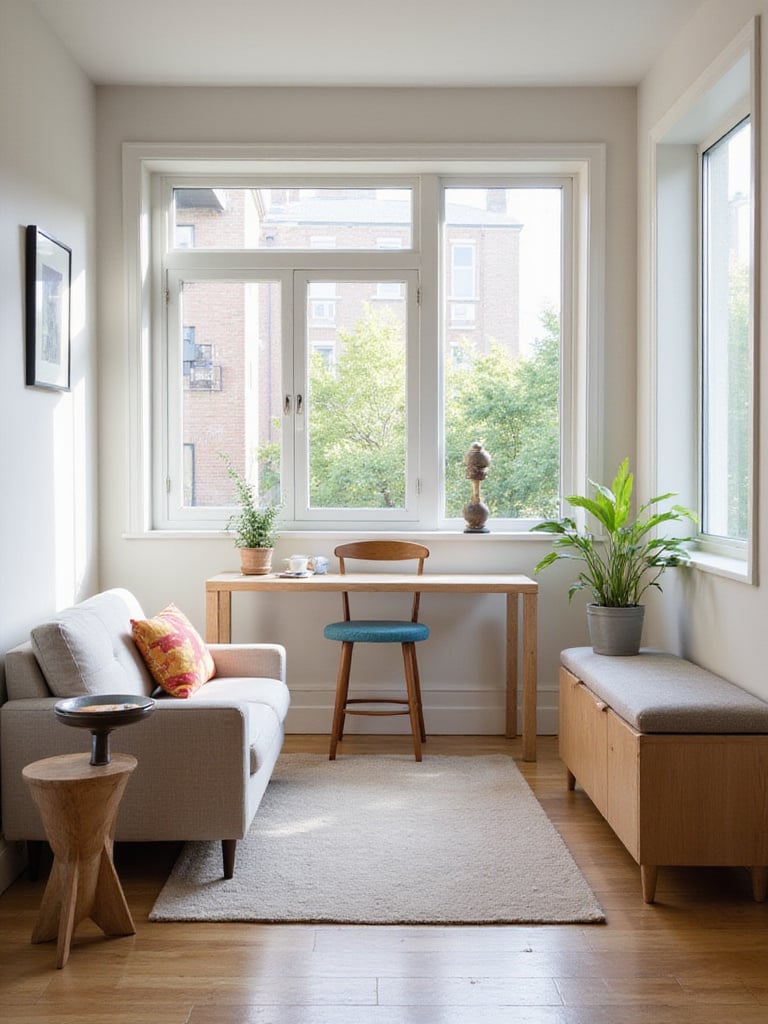
I once worked with a client whose front door opened directly into his small living room. The first thing you’d meet was the back of a huge sofa. The energy just stopped cold. We didn’t buy a single new thing. We simply turned the sofa, opened up a clear path to the window, and suddenly, the whole apartment could breathe. That’s the power of flow. It’s not about following a strict feng shui map; it’s about listening to the room and how you want to feel within it.
Walk through your space as if you’re a guest. Where do you hesitate? Where do you have to squeeze by? These are the spaces asking for a little more room to breathe.
This foundational flow is supported by the pieces you choose to place within it, each one carrying its own purpose.
In an apartment, every object should earn its keep. This isn’t just about saving space; it’s about reducing visual and mental clutter. A piece of furniture that serves two or three functions means two or three fewer things you have to own, store, and clean. It’s a quiet act of simplifying your life.

Think about a beautiful storage ottoman. It’s a place to rest your feet, an extra seat when a friend visits, and a hidden home for your meditation cushions and favorite blankets. A slim console table can act as a room divider, a small writing desk, or a lovely altar for meaningful objects. The key is to choose pieces that transition between their roles with grace. Nothing should be a hassle to convert.
When you’re looking, consider your real, everyday life, not an imagined one.
You’ll start to notice how these hardworking pieces create layers of possibility, inviting a more fluid way of living in your space.
You don’t need walls to create different “rooms” within your room. Our minds are incredibly responsive to environmental cues. By creating distinct zones for different activities, you give your brain a gentle signal to shift its focus. It’s like stepping onto a yoga mat—your body knows it’s time to practice.
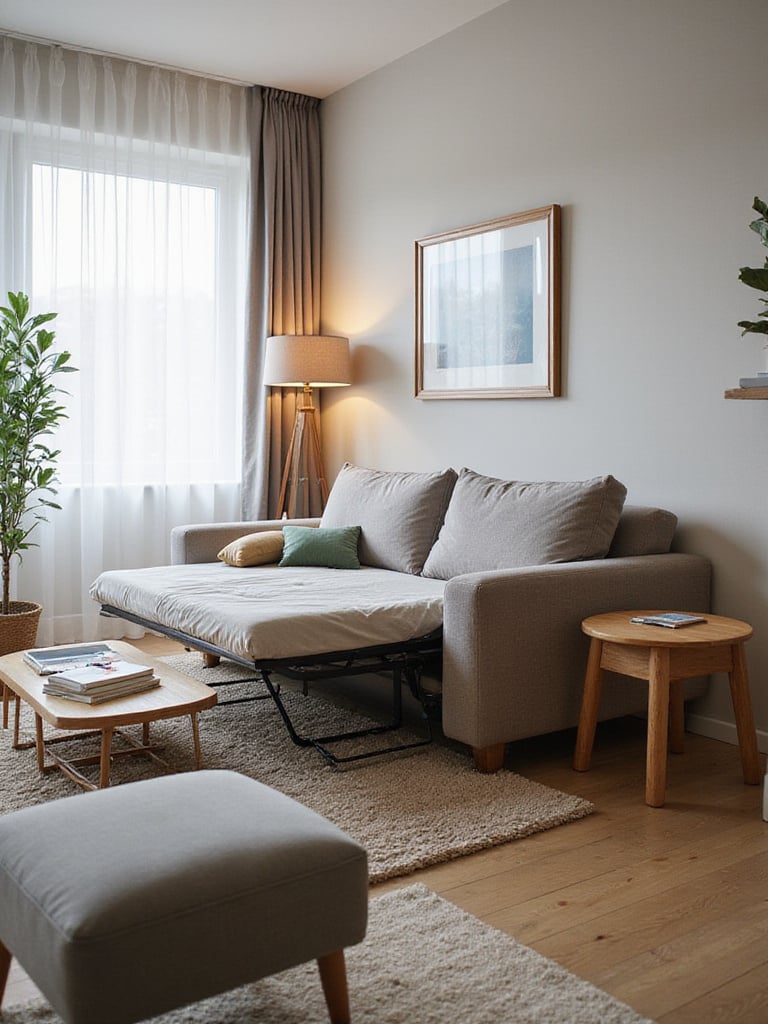
A sacred zone can be wonderfully simple. A soft, circular rug in a corner with a single floor cushion can become your meditation spot. That little act of placing the rug and sitting down tells your whole being, “This is the time for stillness.” A cozy armchair, a good reading lamp, and a small side table create a nook dedicated to quiet contemplation or getting lost in a book. These zones don’t need to be large. A 3×3 foot space, used with intention, can feel like a world apart.
The secret is consistency. When you repeatedly use a space for a specific purpose, it becomes energetically charged for that activity, making it easier to drop into the right state of mind.
These subtle zones feel even more powerful when they are bathed in the right kind of light.
Natural light is life. It energizes us, supports our natural circadian rhythms, and makes even the tiniest rooms feel open and airy. In an apartment, where you can’t just add another window, every ray of sunlight is precious.

Start by performing a simple audit. What is blocking your windows? Is it heavy, dark curtains? A piece of furniture pushed up against the sill? Clear the way. Let the light in. Swap out heavy drapes for sheer or light-filtering linen curtains that offer privacy while letting the light pour through. And here’s a tip that sounds simple but is surprisingly effective: clean your windows. Seriously. Dust and grime can reduce the amount of light coming through by up to 30%.
As that beautiful morning light streams in, it sets the stage for the other layers of light that will shape your room’s mood throughout the day.
That one overhead light fixture—the one I call the “big light”—is rarely the answer. It tends to cast harsh shadows and create a flat, sterile feeling. To create a truly nurturing space, you need to think in layers: ambient, task, and accent lighting.
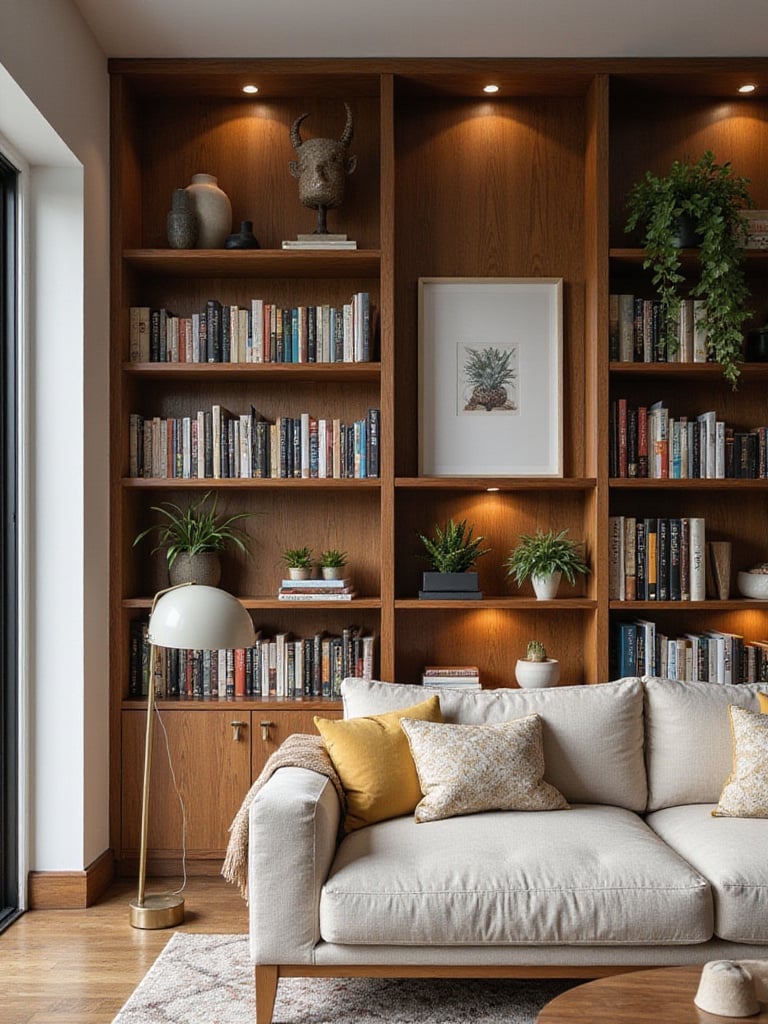
Ambient light is your base layer, the overall glow. This comes from floor lamps and table lamps that cast warm, diffused pools of light. Task lighting is focused, meant for specific activities like a reading lamp arching over your favorite chair. And my favorite, accent lighting, is the magic layer. This is the soft uplight behind a large plant, a tiny picture light over a special piece of art, or a collection of candles you light during your evening wind-down.
“I tell my clients to think of lighting as a tool for emotional regulation. The ability to dim the lights and shift the focus from bright and functional to low and intimate is one of the most powerful ways to change the energy of a room and signal to your nervous system that it’s time to rest.”
By having these different sources on different switches (or even better, on dimmers), you can tailor the atmosphere of your room to support you, whether you need bright energy for a morning yoga flow or a soft, gentle glow for meditation.
This interplay of light and shadow brings out the beauty of the living things you invite into your home.
In our often-urban lives, bringing nature indoors isn’t just a decorative choice; it’s a vital act of connection. Plants are living, breathing beings that infuse a space with irreplaceable life force. This connection to nature, known as biophilia, is proven to reduce stress, improve focus, and even clean the air you breathe.
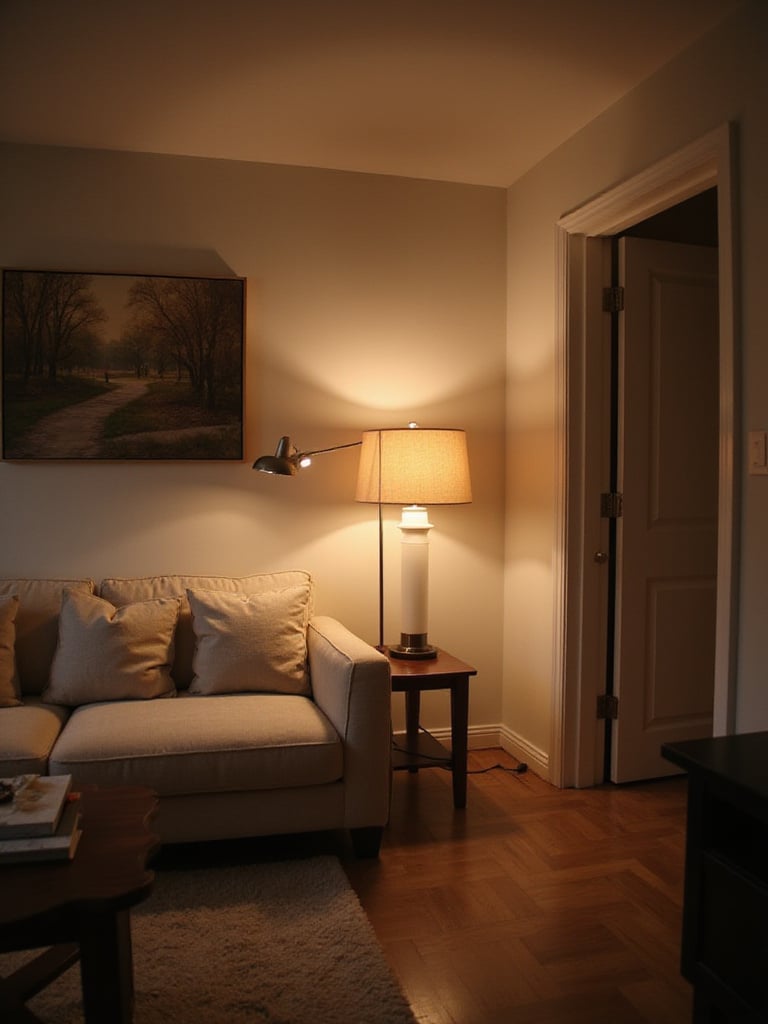
The key is to choose plants that will be happy in your home. Don’t fight your light conditions. If you have a dim corner, embrace a Snake Plant or a ZZ plant—they are incredibly resilient and thrive on a bit of neglect. If you’re blessed with bright, indirect light, a Fiddle Leaf Fig or a Rubber Tree can create a stunning architectural statement.
Caring for a plant, watching it grow and change, is a mindfulness practice in itself. It’s a beautiful, daily reminder of the cycles of life.
The green of your plants is just one part of your room’s color story, a story that quietly influences your mood every moment you’re home.
Color is emotion. It’s energy. And it has a profound and often unconscious effect on our well-being. Instead of chasing the latest color trend, I encourage you to turn inward and ask: “How do I want to feel in this room?”
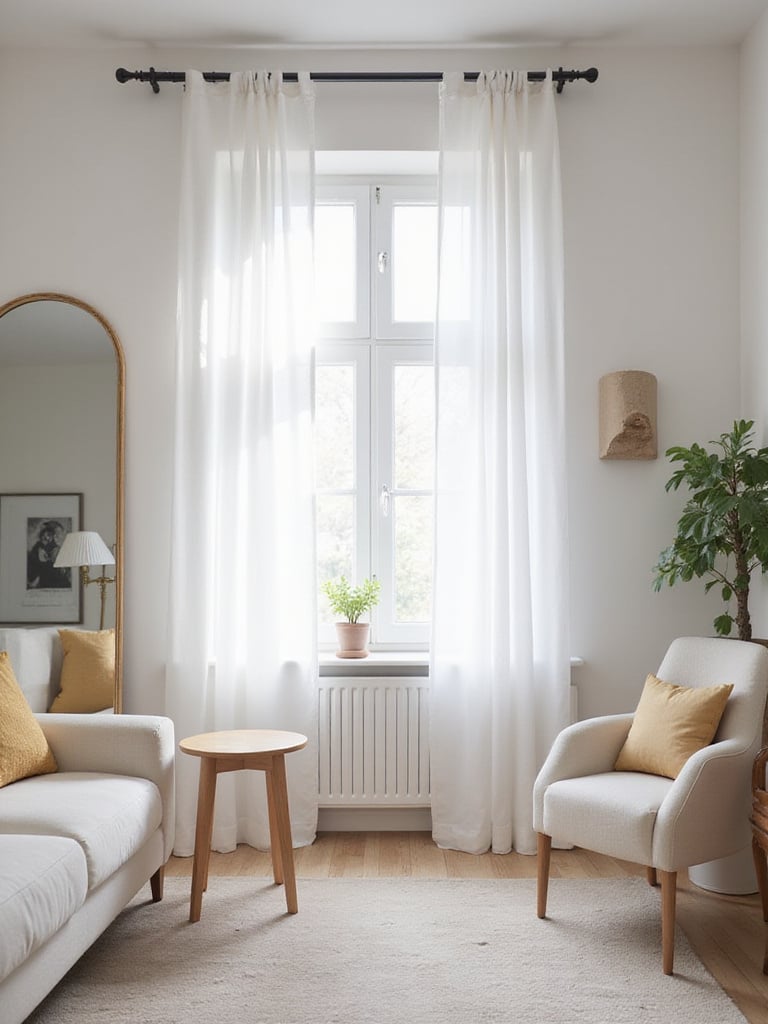
Soft blues and greens are universally calming, wonderful for spaces intended for rest and meditation. Warm, earthy tones like terracotta, sage green, or a soft, sandy beige create a grounding, stable energy. If you need clarity and a feeling of spaciousness, crisp whites and light grays can work beautifully, but they need to be balanced with warm textures to avoid feeling sterile.
But here’s a crucial tip I’ve learned over the years: never, ever choose a color from a tiny paint chip under the fluorescent lights of a hardware store. Get a sample pot, paint a large square on your wall (at least 2×2 feet), and live with it for a few days. Watch how it changes in the morning light, on a cloudy afternoon, and under your lamps at night. The color that feels right will reveal itself.
This thoughtful approach to color creates a backdrop that enhances the objects you choose to live with.
Let’s be honest: clutter is visual noise. It pulls at our attention and creates a low-grade hum of stress. Creating effective storage isn’t about hiding all your stuff; it’s about creating intentional, beautiful homes for the things you use and love. When everything has a place, tidying up isn’t a monumental chore but a simple, mindful act of resetting your space.
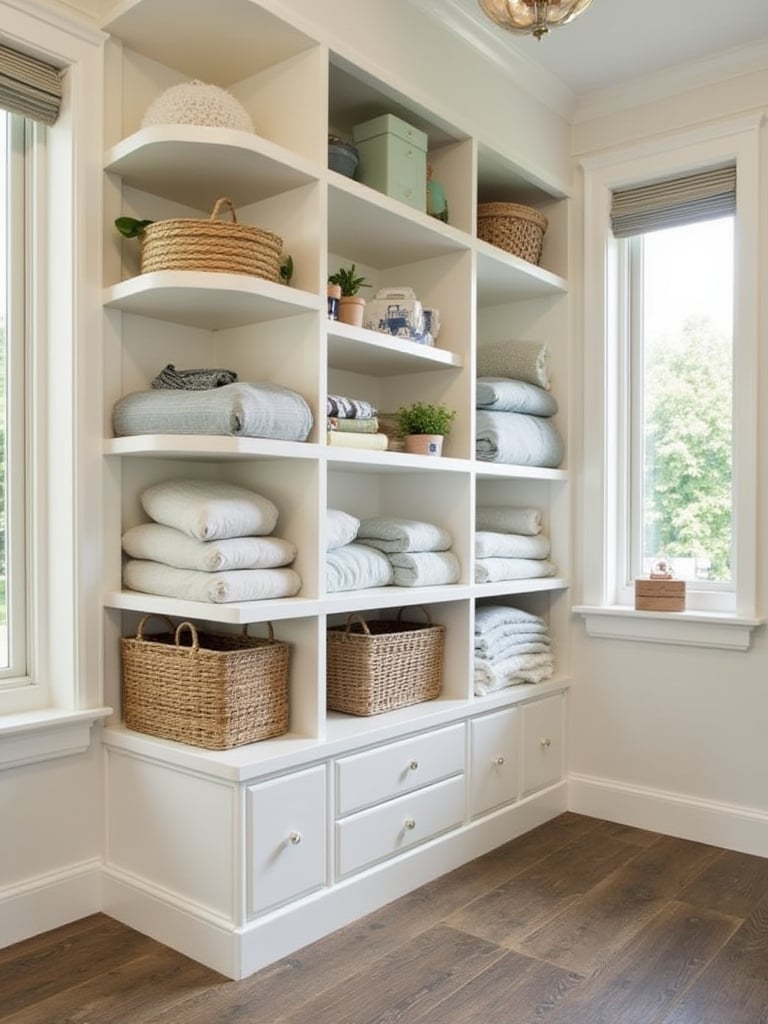
In a rental, you can’t build custom cabinets, but you can get creative.
The goal is storage that integrates so seamlessly into your decor that it feels like an enhancement, not just a necessity.
This leads us right into the importance of how things not only look, but how they feel to the touch.
In a world that is becoming increasingly digital and screen-based, our sense of touch is starving for attention. Texture is how we ground ourselves. It’s what makes a space feel rich, inviting, and deeply comfortable. Layering different textures is like composing a symphony for your fingertips.
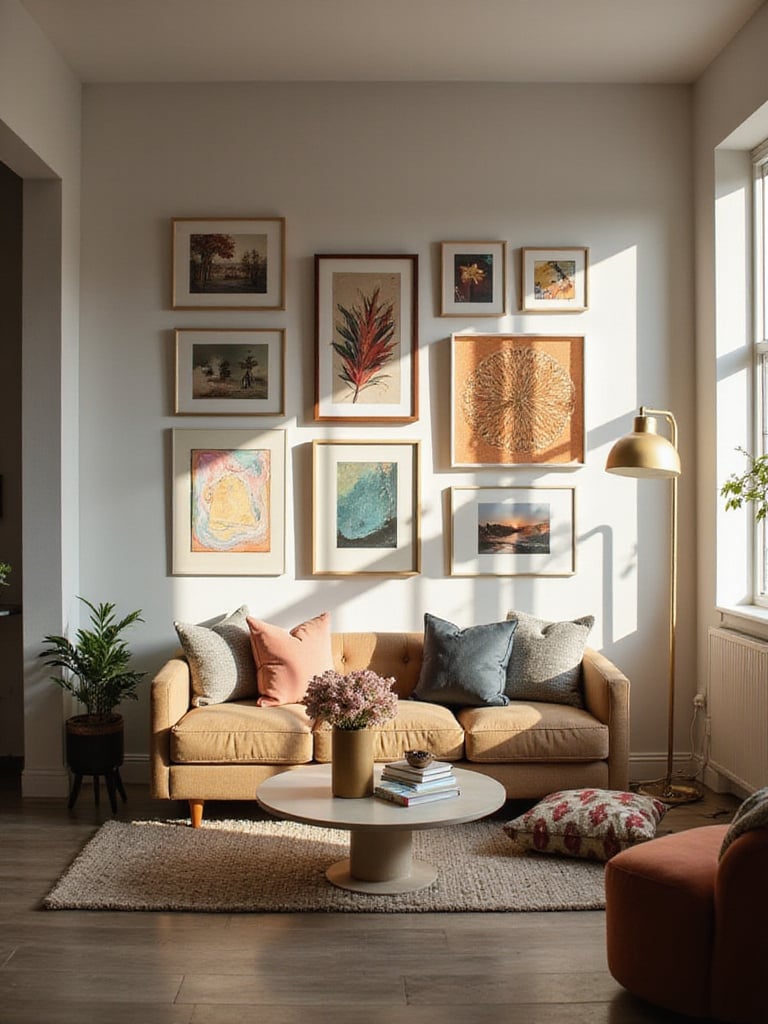
Think about the sensory experience. The nubby weave of a linen pillow, the soft fluff of a sheepskin rug under your feet, the chunky knit of a wool throw blanket, the smooth, cool surface of a ceramic vase. Each of these textures sends a signal to your nervous system. Soft textures, in particular, signal safety and rest.
Mix them up to create interest. A sleek leather chair becomes infinitely more inviting with a soft cashmere throw draped over it. A rustic jute rug provides a beautiful, earthy contrast to a smooth cotton sofa. This isn’t about perfection; it’s about creating a tactile landscape that makes you want to curl up and stay a while.
The feeling of these textures is one part of the sensory equation; the other is sound.
Our homes should be a refuge from the noise of the world, but in an apartment, that can be a real challenge. The upstairs neighbor’s footsteps, the traffic outside—it all seeps in. Creating quiet zones is an act of self-preservation, and it involves two things: absorbing unwanted noise and introducing pleasant sounds.
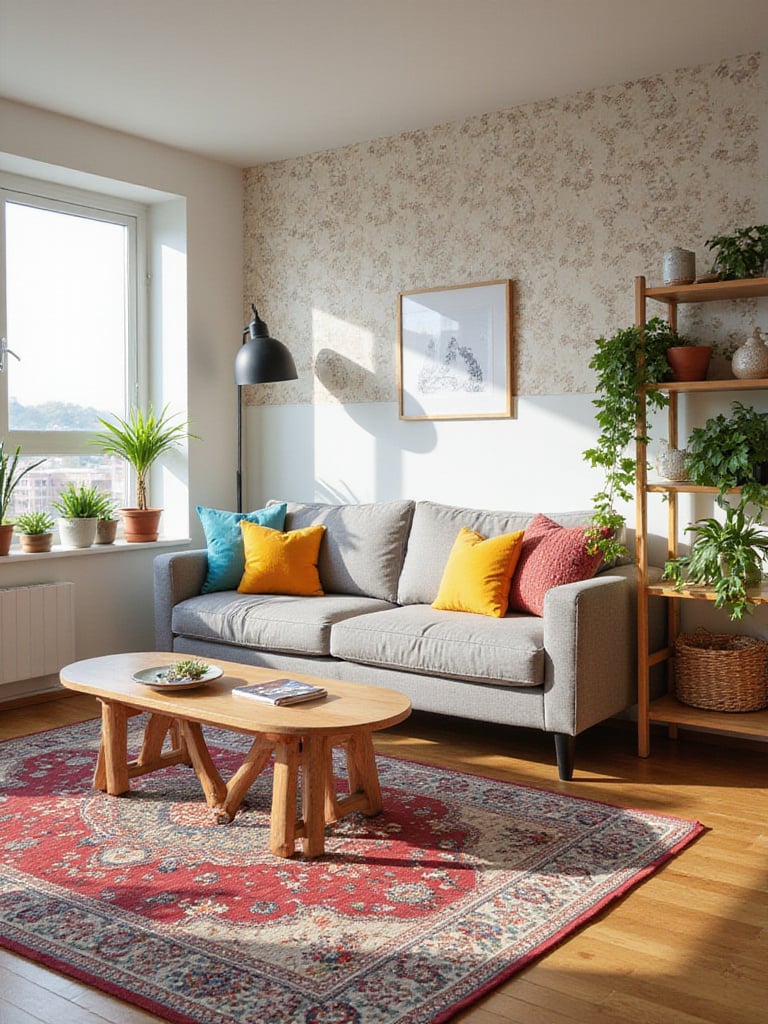
Soft surfaces are your best friend here. They are brilliant at soaking up sound.
You can also add gentle, “masking” sounds. The gentle gurgle of a small tabletop fountain or a high-quality white noise machine can cover up jarring, irregular noises, creating a consistent and peaceful soundscape for focus or sleep.
This ability to control the sensory input of your space allows it to be more flexible for your daily needs.
Your living room isn’t a static museum display; it’s the heart of your home, and it likely wears many hats. It’s your yoga studio in the morning, your office in the afternoon, and your cozy retreat in the evening. Designing for this flexibility is key to making a small space work hard without feeling chaotic.
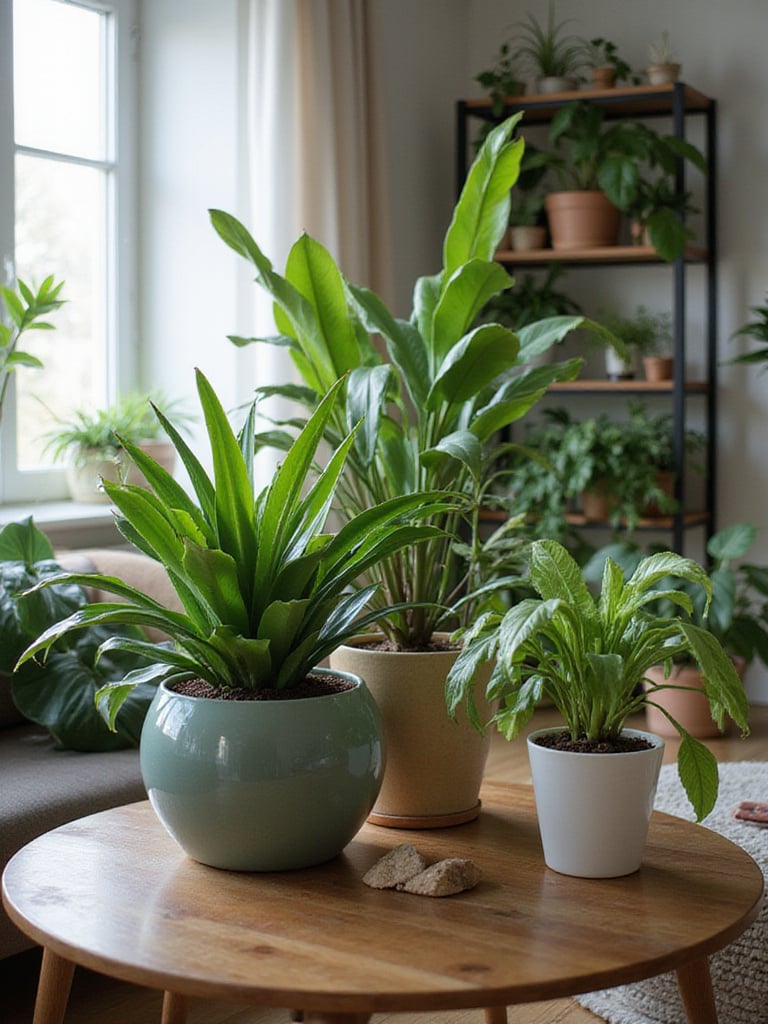
This is where lightweight, modular, and movable pieces truly shine. A coffee table on discreet casters can be wheeled out of the way in seconds to make room for a yoga mat. A folding screen can create a temporary, beautiful backdrop to hide your work area at the end of the day, signaling to your mind that the workday is done.
The idea is to create a space that can transform with minimal effort, allowing your home to support the natural rhythm of your day.
Within this flexible space, you can place objects that hold deep, personal meaning.
Please, don’t just buy art to fill a wall. The objects you surround yourself with should be more than just decor; they should be reflections of your journey, your values, and your aspirations. A space filled with meaningful items has a heart. It tells a story. Your story.
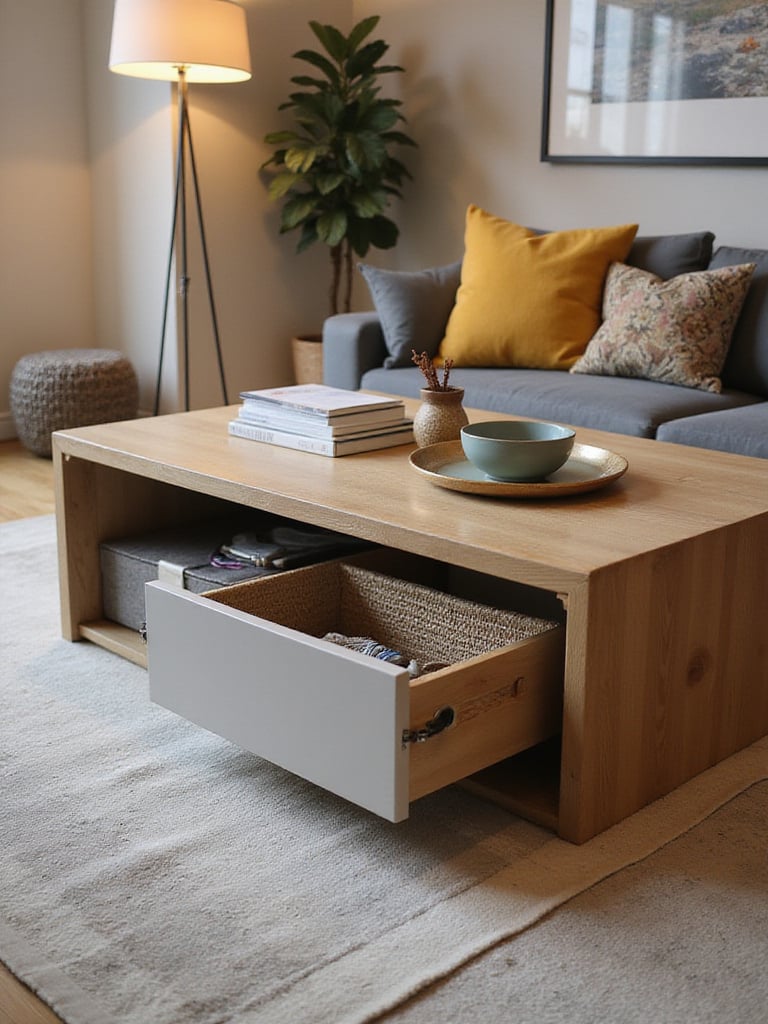
Art doesn’t have to be an expensive painting. It can be a beautifully framed photograph from a trip that changed you. Maybe a collection of smooth stones you gathered on a beach. It can be a piece of textured fabric you found at a market. Or a simple, hand-thrown ceramic bowl that feels good to hold.
Take your time with this. Live with empty walls for a while rather than rushing to fill them. Notice what you’re drawn to. Group smaller items together to give them more presence and visual impact. Ask yourself of each object, “Does this bring me a sense of peace, joy, or inspiration?” If the answer is yes, it belongs in your sanctuary.
These personal treasures are often best highlighted by the clever use of reflection.
Mirrors are magic in small apartments. They are the oldest trick in the design book for a reason: they work. A well-placed mirror can visually double the size of a room and dramatically amplify the available light. But placement is everything.
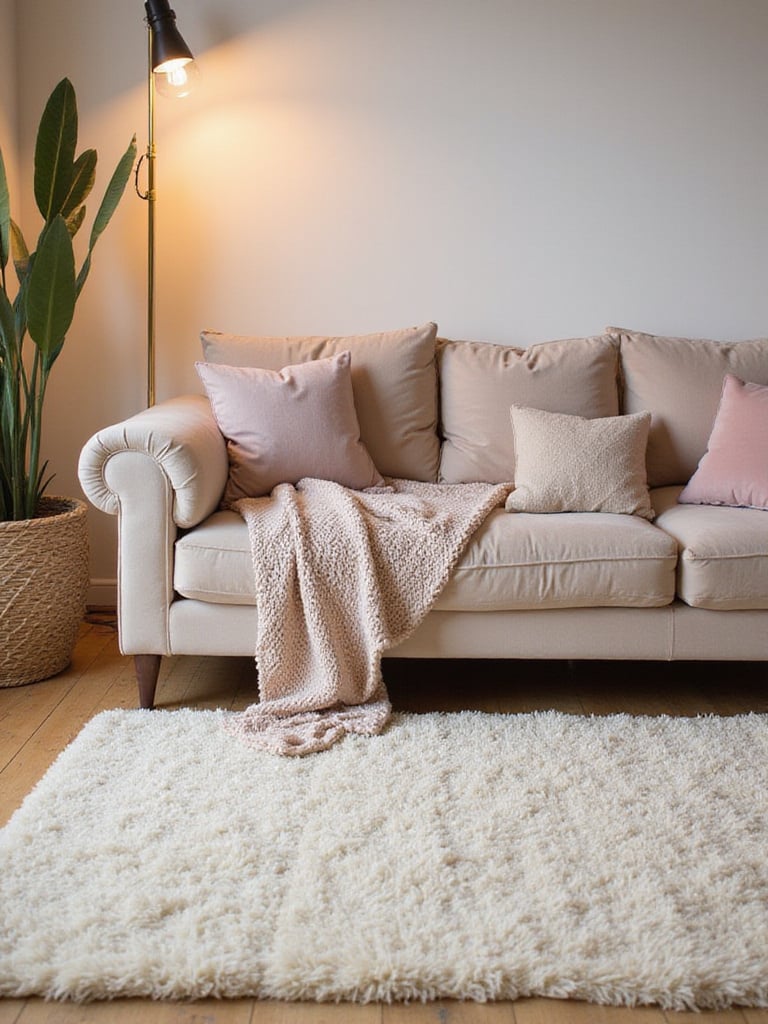
Here’s the most important rule I give my clients: a mirror will only be as beautiful as what it reflects. Before you hang one, stand where the mirror will be and see what’s in the reflection. Will it reflect a beautiful window and the trees outside? Wonderful. Will it reflect a cluttered corner or the TV? Maybe not the best spot.
A large, floor-length mirror leaning against a wall can create a grand sense of space and serves as a beautiful object in its own right. A round mirror can soften a room with lots of hard, straight lines. Positioning a mirror to reflect your prettiest lamp or a favorite piece of art will double the beauty and create a lovely sense of depth in the evening.
This sense of expansion and light can also be cultivated by attuning your home to the changing seasons.
Your home shouldn’t feel static; it should feel alive and connected to the world outside. One of the most beautiful ways to do this is to create a space that gently shifts with the seasons. This doesn’t mean a complete redecoration four times a year. It’s about small, mindful swaps that honor the energy of the current season.
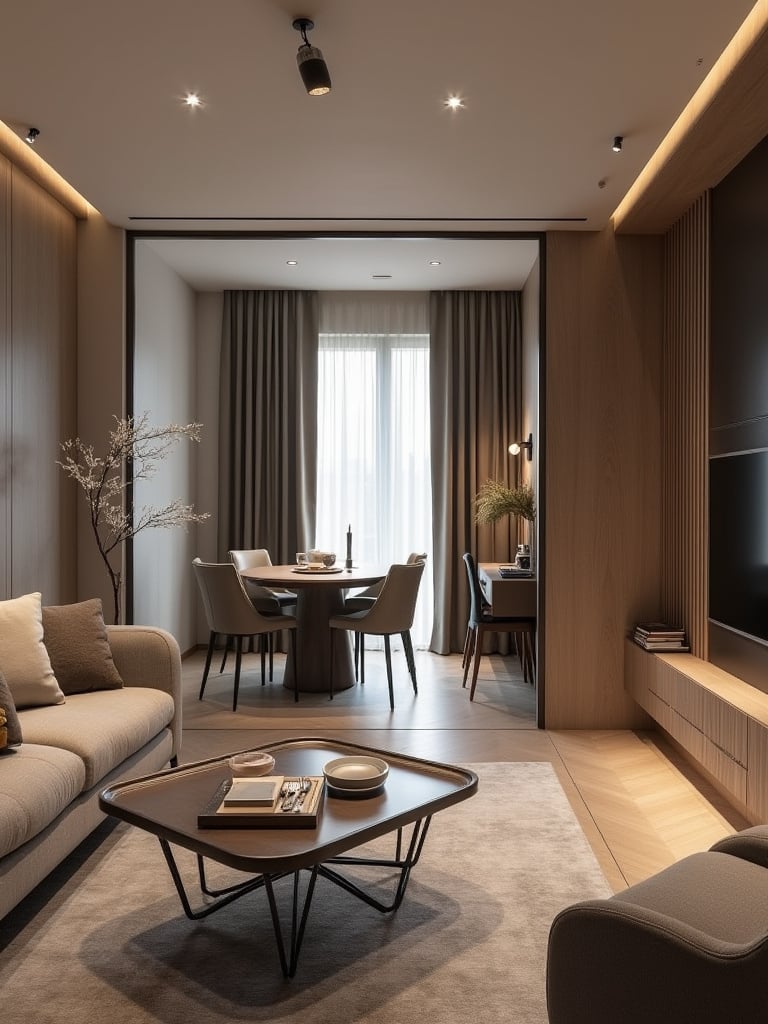
Keep your foundational pieces—your sofa, your main rug, your large furniture—neutral and versatile. Then, you can layer in the seasonal accents.
This simple practice keeps your space from feeling stagnant and helps you feel more attuned to the natural cycles of rest and activity, darkness and light.
Of course, in our modern lives, we must also make peace with the one thing that feels decidedly unnatural: our technology.
Our devices are part of our lives, but they don’t have to be the focal point of our sanctuary. Visible cables, blinking lights, and the constant presence of screens can create a kind of visual static that disrupts our peace. The goal isn’t to banish technology, but to integrate it mindfully.
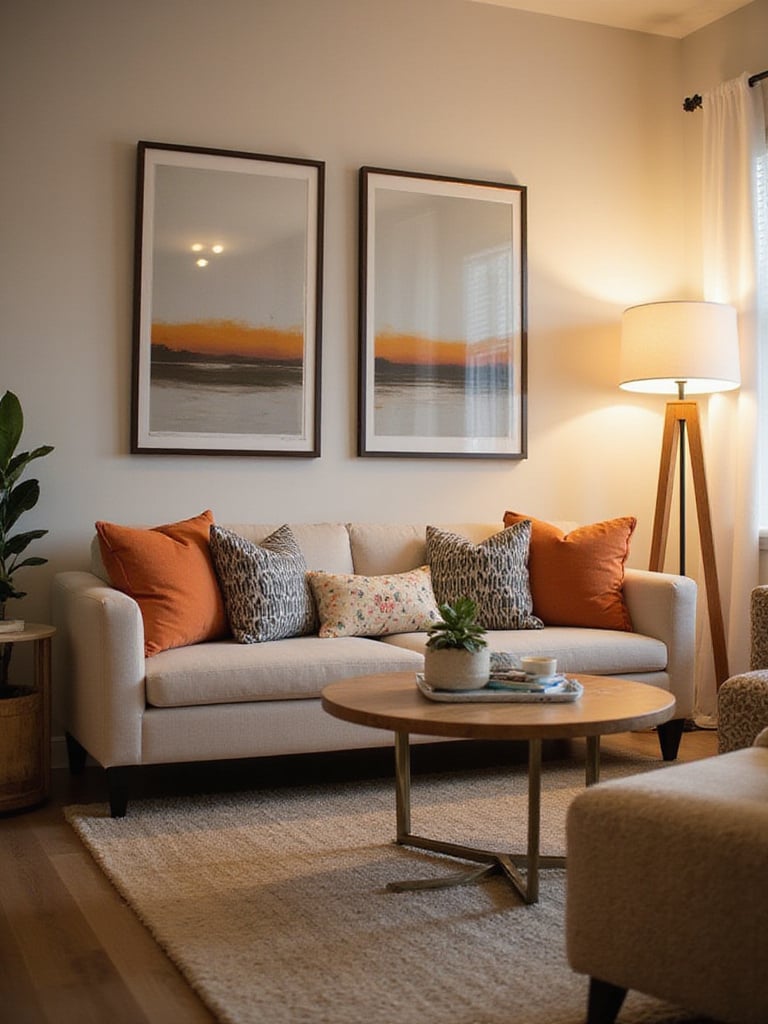
Create a designated “home” for your tech. This could be a charging station tucked away in a drawer or a beautiful box on a shelf. Tame the “cable spaghetti” behind your TV with fabric cord covers or simple adhesive clips. When the tech is organized and out of sight, its energetic pull on your attention diminishes dramatically.
Consider creating tech-free zones or times. Maybe the comfiest armchair is a no-phone zone. Perhaps for the first hour you’re home, all screens are off. These small boundaries can have a huge impact on your ability to be present and connect with yourself, your space, and your loved ones.
The less time you spend wrestling with tech, the more time you have for what matters—a principle that also applies to cleaning.
A truly serene living room is one that doesn’t demand constant, stressful upkeep. Your home should be a source of restoration, not another item on your to-do list. When you’re making choices, think about the practical reality of living with them.

That beautiful, white linen sofa might look stunning in a magazine, but if you have pets, kids, or are just prone to spilling your tea, it might become a source of anxiety. Instead, consider a durable fabric in a more forgiving color, or even better, a sofa with a washable slipcover. Choose rugs that are easy to clean, like jute or a low-pile wool. Opt for smooth, clear surfaces that are easy to wipe down rather than intricate furniture that collects dust in a thousand tiny crevices.
The most mindful design choice is often the one that simplifies your life and gives you back your time and energy for your practice and your passions.
This ease extends beyond just surfaces; it includes the very air you breathe.
We often design for our eyes, but our sense of smell is our most primal sense, directly linked to memory and emotion. The scent and quality of the air in your living room have a huge impact on how it feels, yet they are often an afterthought.

Start with a foundation of clean, fresh air. Open your windows daily, even for just a few minutes, to clear out stagnant energy. An air purifier can be a great investment, especially in a city apartment. Your plants are already working hard as natural purifiers.
Once you have that clean base, you can introduce gentle, natural scents. Avoid synthetic plug-in air fresheners, which can be overwhelming and full of chemicals. Instead, try an essential oil diffuser with a few drops of lavender for calm or citrus for energy. A small vase of fresh eucalyptus or a pot of simmering water on the stove with cinnamon sticks and orange peels can fill your home with a beautiful, natural aroma that truly nurtures the soul.
Ultimately, all these elements come together to support the most important thing in the room: you.
Your home is not a finished product. It’s a living, breathing reflection of you. And just like you, it is constantly evolving. The most mindful space is one that is flexible enough to grow and change with you. It should honor who you are today while holding space for the person you are becoming.

Don’t feel pressured to create the “perfect” meditation corner if you’re just beginning your practice. Start with one comfortable cushion in a quiet spot. See how it feels. Let it evolve naturally. Arrange your furniture to support the life you have now, but keep the possibilities open for the future you dream of. The Japanese have a concept called wabi-sabi, which finds profound beauty in the imperfect, the incomplete, and the transient. Your home is a beautiful work in progress. Just like you.
Treat your space with the same compassion and patience you offer yourself on your meditation cushion. It is, after all, an outer reflection of your inner landscape.
Transforming your living room from a generic rental space into a personal sanctuary isn’t a weekend project with a finish line. It’s a practice. It’s the ongoing, beautiful work of curating an environment that holds and nurtures you. The power of these ideas lies not in doing all of them at once, but in their gentle, layered application. Each small, intentional change is a ripple that contributes to a sea of tranquility.
So, where do you begin? Not with a shopping list or a mood board. Start by simply sitting in your living room for ten minutes. Close your eyes. How does it feel? What do you hear? What do you smell? Does your body tell you what space needs? Trust that quiet, inner wisdom. Maybe it’s asking for a single plant. Is it asking for less clutter. Maybe it’s just asking for a moment of your quiet, loving attention. Start there.